Absolution, Deceit and Renewables
Politics / Renewable Energy Feb 06, 2017 - 01:54 AM GMTBy: Raul_I_Meijer
 It’s been a while since the Automatic Earth featured an article from Energy Matters, the site run by our longtime friend Euan Mearns, Honorary Research Fellow at The University of Aberdeen, and his co-conspirator Roger Andrews, a British engineer/geophysicist, semi-retired in Mexico. But I read a piece by Roger yesterday that I like, because it allows me to rant against all the false claims emanating from countries and companies about the share of renewable power in their total energy consumption.
It’s been a while since the Automatic Earth featured an article from Energy Matters, the site run by our longtime friend Euan Mearns, Honorary Research Fellow at The University of Aberdeen, and his co-conspirator Roger Andrews, a British engineer/geophysicist, semi-retired in Mexico. But I read a piece by Roger yesterday that I like, because it allows me to rant against all the false claims emanating from countries and companies about the share of renewable power in their total energy consumption.
Roger focuses on the railway system in the Netherlands, run by NS, which recently claimed that it operates on 100% wind power. This is of course, if you know anything about electricity generation and the grid, a preposterous claim, and that the company has the guts to make such a claim can only serve to prove how little the general public knows about the topic. Or they wouldn’t dare. Green is still so sexy in certain circles, and actual knowledge so poor, that companies like the NS feel no scruples about stretching their ‘greenness’ into absurd theater territory.
Google does something similar. And you might be inclined to think that the topic is so important for both the companies and the people they seek to please with their claims that grossly exaggerating the numbers would be out of the question, but not so. Instead, “Google announced that it will purchase enough renewable energy to match 100% of its operations in 2017”. And that is not the same as running on renewables, which is what is being suggested (in carefully cherry-picked terms). I like this assessment by electronicdesign.com:
Is Google’s Renewable Energy Plan What It Seems?
“Essentially, Google is contracting for green energy from places that can never reach its data centers. If it were as simple as Google claims, it would be easy to build a renewable power sector. New York City could execute a massive number of contracts with wind farms in upstate New York because they are on the same grid.“ [..]
Google is promising to buy—on an annual basis—the same amount of megawatt-hours (MWh) of renewable energy as the amount of megawatt-hours of electricity that it consumes for its worldwide operations. This approach will benefit the renewable energy market even though it is still generating the same amount of greenhouse gas emissions with or without its 100% renewable energy purchasing plan.
Google ‘buys renewable energy’ in various places around the world, but its servers don’t run on it. It’s exactly like companies buying carbon permits from poorer nations; an excuse to keep polluting. As both the permits and the renewables are traded in markets where prices are low and/or heavily subsidized. As for the scale involved, “In 2015, Google consumed 5.7 terawatt-hours (TWh) of electricity, which is nearly as much electricity as the city of San Francisco.” And don’t forget it keeps consuming ever more as the company grows. That’s a lot of fossil fuels. The medieval ‘principle’ of absolution inevitably comes to mind.
As for the Netherlands’ railways, Roger concludes below, after explaining why, that “the Netherlands’ electrified railways continue to be powered dominantly by fossil fuel electricity. The “Harried Dutch commuters” who are “travelling on one of the most environmentally friendly rail networks in the whole of Europe, if not the world” are being sold a bill of goods.”
I would like to add that because of continuing issues related to intermittency and baseload, which are nowhere near being solved, the very grid itself that is used to deliver the ‘renewable’ electricity couldn’t exist without fossil fuels. Or, in other words, if there were only ‘green’ sources of electricity, there would be no grid. How much can be moved towards ‘green’ sources is still somewhat debatable, but just like solar panels and wind turbines cannot build themselves but need fossil fuels to be produced, there is a limit far far below the 100% both Google and the Dutch railways are (deceitfully?) toying around with. Here’s Roger:

Do The Netherlands’ Trains Really Run On 100% Wind Power?
This question generated a number of comments in the last Blowout so I thought I would take a quick look at it. I find that the electrified portion of the Dutch railway network (Nederlandse Spoorwegen, or NS) runs on grid electricity that comes dominantly from fossil fuel generation (natural gas and coal). NS claims 100% wind power because it has a contract with various wind farms to produce enough energy to power its rail system, but this is just an accounting transaction. Only a small fraction of the power delivered to its trains actually comes from wind.
First some details on the Netherlands’ electricity sector. As shown in the table below installed capacity is dominantly fossil fuel, with natural gas making up 61% of total installed capacity and coal 15%. Wind contributes 4,117MW, representing 13% of the capacity mix. (Data from ENTSO-E ):
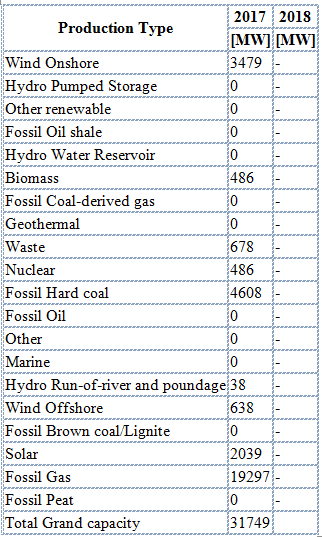
No details on the current generation mix are readily available, but as shown in Figure 1 gas and coal supplied around 80% of the Netherlands’ electricity between 2000 and 2013 and it’s likely that this percentage still applies.
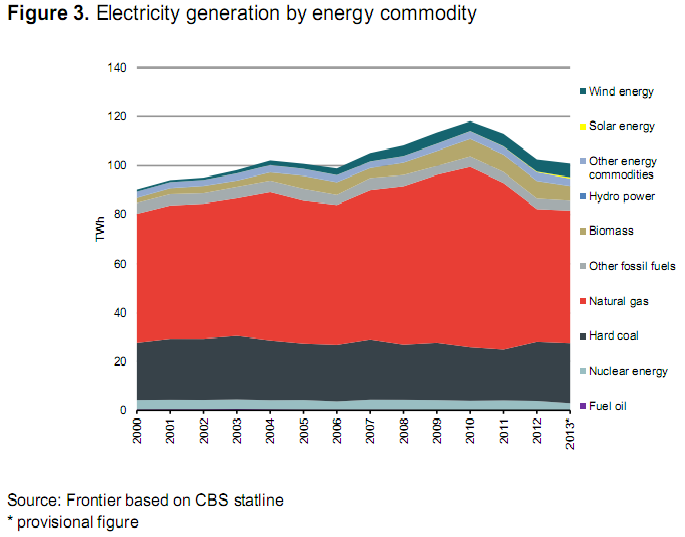
Figure 1: The Netherlands’ generation mix 2000-2013. Data from Frontier Economics
How much of the Netherlands’ electricity is supplied by wind? According to Cleantechnica
wind power in the Netherlands generates 7.4 billion kWh (7.4TWh) of electricity annually, and according to BP the Netherlands’ total electricity generation in 2015 was 109.6TWh. However, wind power consumption in the Netherlands in 2015 was 12.5TWh, indicating that about 5TWh of wind power was imported during the year. So while wind contributes about 7% to the Netherlands’ electricity generation it contributes about 11% to the country’s electricity consumption. Either figure comfortably exceeds the amount of electricity NS uses to power its electric trains, which is variously quoted as either 1.2 or 1.4TWh/year.
The Netherlands imports wind power basically because it’s falling behind its EU renewable energy targets. But how does NS know the power it imports is wind? Because Eneco, which contracts to supply NS with wind power, gets a “Guarantee of Origin” from the exporter under which the exporter confirms that the power came from wind and assigns the rights to it to NS. As Cleantechnica puts it: “the GoO system allows for the transfer of the rights to call electricity green from those who actually generate renewable energy to those who don’t but want to classify their power as such. The actual amount of green energy produced is unaffected.”
There is, however, a problem. For NS to use only wind power from wind farms to power its rail system the wind farms must be connected directly to NS’s railways. (Figure 2: Note the dotted lines showing non-electrified track. According to LJ Electrical only 2,231km of NS’s total 3,223km of track is electrified):
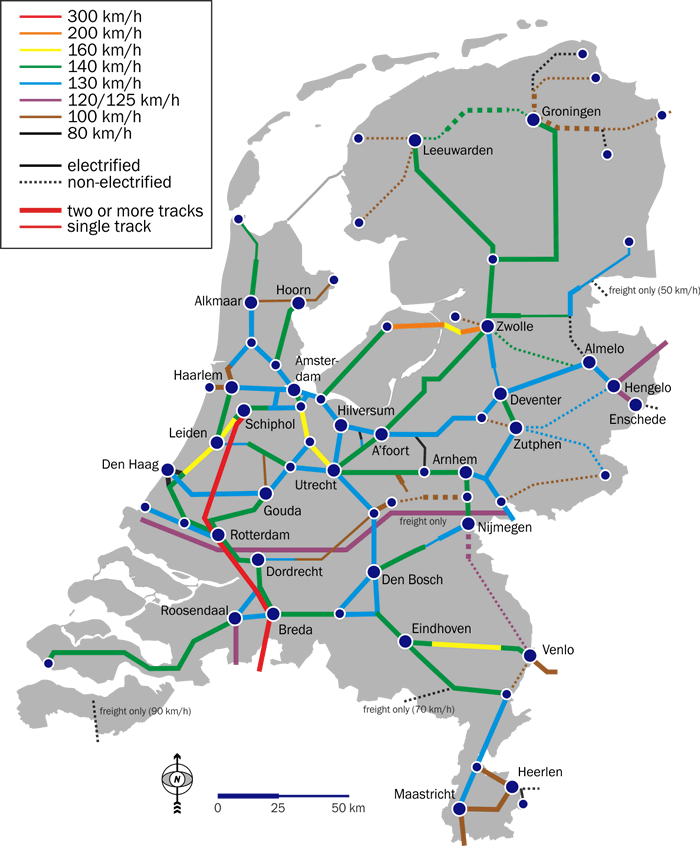
Figure 2: The Netherlands’ railway network.
And of course no such connections exist. The two Dutch wind farms that have contracted to sell power to NS (Noordoostpolder and Luchterduinen) are both connected directly to the Dutch grid, along with all the other power plants in the country, and NS draws its power from the grid:
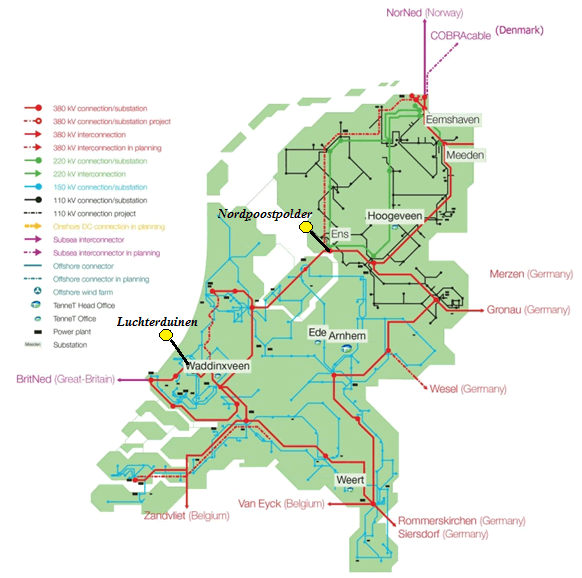
Figure 3: The Netherlands’ electricity grid. Grid connections for the Luchterduinen and Nordpoostpolder wind farms (locations approximate) are shown in black.
When wind power is fed into a grid it becomes inextricably mixed with all the vibrating electrons from other generation sources to the point where there is no way of knowing where any power taken from the grid came from. Grid power in fact reflects the overall generation mix, which in the case of the Netherlands is dominantly gas and coal with only a small contribution from wind. How much wind? Over the course of this year the average will be around 11%, equal to wind power’s share of the Netherlands’ annual grid electricity consumption.
And only half of the wind power NS has contracted for comes from the Netherlands. The other half comes from “newly built wind farms in …. Belgium and Finland”. Wind power now supplies about 10% of Belgium’s electricity, so power imported from the Belgian grid will be about 10% wind. Wind power from Finland can be discounted. Only about 2% of Finland’s generation mix is wind, and by the time it passes through the Finnish, Swedish and German grids on its way to the Netherlands it will effectively have disappeared. Imports from the German grid, however, will contain about 14% wind power, although not wind power that NS has contracted for. Putting these numbers together indicates that only 10-15% of the electricity consumed annually by NS’s electric trains will come from wind, with the rest a mixture that includes mostly Dutch gas and coal plus a small amount of Belgian and German coal, nuclear and lignite – and maybe even a little German solar.
The supply of wind power to the Dutch grid will also not be constant. I have no wind records for the Netherlands but P.F. Bach supplies data for Belgium, which should be a close analogy, and Figure 4 shows Belgian wind generation for September 2014:
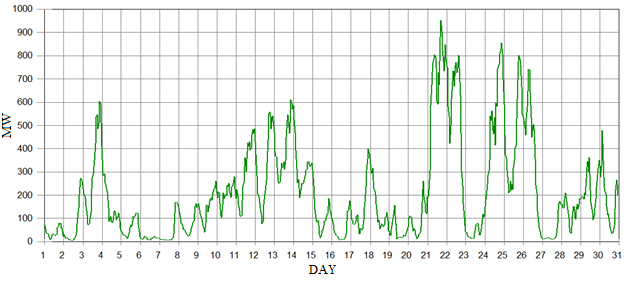
Figure 4: Belgian wind generation, September 2014
With an installed capacity of around 1850MW in this month the overall wind capacity factor was 11% and there were a number of occasions on which wind generation fell effectively to zero for hours on end. During these periods wind generation in the neighboring Netherlands would also have fallen to low levels. Were these conditions to repeat themselves now, and if NS’s trains were powered exclusively by wind, they would almost certainly come to a halt. (Although Eneco, NS’s wind power procurer, claims that its “wind farm portfolio guarantees sufficient capacity to cover such eventualities” . Apparently Eneco can make the wind blow to order.)
So how does NS justify the claim that all Dutch trains run on 100% wind power? Well, it actually claims that only the electrified portion runs on 100% wind. Only the Guardian has seen fit to publish a correction:
An earlier version said all Dutch trains were now 100% powered by wind-generated electricity, according to the national railway company NS. The company said all electric trains were now powered by wind energy. (my emphasis)
And how does NS justify this lesser claim? According to Railway Technology because it has a:
“green energy contract – thought to be among the largest yet signed in Europe – between power supplier Eneco and VIVENS, an energy procurement joint venture comprising Netherlands Railways (NS), Veolia, Arriva, Connexxion and rail freight firms”, and because
“NS and Eneco have carefully selected a list of wind farms that fulfil their criteria of being traceable, sustainable – or renewable – and additional, or new”, and because
“This partnership ensures that new investments can be made in even newer wind farms, which will increase the share of renewable energy. In this way, the Dutch railways aim to reduce the greatest negative environmental impact caused by CO2 in such a way that its demand actually contributes to the sustainable power generation in the Netherlands and Europe.”
The first two are “feel good” justifications that have no practical impact. The third – that by purchasing wind power that would otherwise have gone elsewhere NS is leaving the door open for more wind projects and more CO2 reductions – is the only one that offers any tangible benefits. But there is no guarantee that the unfilled demand will be met by renewables, and in any event the 1.2-1.4TWh/year consumed by NS represents barely more than 1% of the Netherlands’ annual electricity consumption and a totally negligible fraction of European consumption. This is hardly enough to make a big deal about.
And meanwhile the Netherlands’ electrified railways continue to be powered dominantly by fossil fuel electricity. The “Harried Dutch commuters” who are “travelling on one of the most environmentally friendly rail networks in the whole of Europe, if not the world” are being sold a bill of goods.
By Raul Ilargi Meijer
Website: http://theautomaticearth.com (provides unique analysis of economics, finance, politics and social dynamics in the context of Complexity Theory)© 2017 Copyright Raul I Meijer - All Rights Reserved Disclaimer: The above is a matter of opinion provided for general information purposes only and is not intended as investment advice. Information and analysis above are derived from sources and utilising methods believed to be reliable, but we cannot accept responsibility for any losses you may incur as a result of this analysis. Individuals should consult with their personal financial advisors.
Raul Ilargi Meijer Archive |
© 2005-2022 http://www.MarketOracle.co.uk - The Market Oracle is a FREE Daily Financial Markets Analysis & Forecasting online publication.



